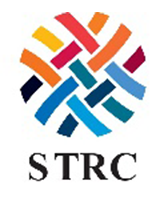Rick Stanford Brands and Retailers and consequently textile manufacturers are under tremendous pressure from consumers to provide products that are manufactured in a sustainable way. Baldwin Technology will present case studies how transitioning from pad application to spray finishing saves water, chemistry and significantly lowers the carbon footprint in the finishing department.
Category: Abstracts
Unlocking the Potential of Biobased Materials for Reduction of Environmental Impact
Dr. Ludwig Huber The upcoming economic transformation towards a more sustainable use of materials andenergy to decouple economic growth from greenhouse gas emissions will be anoutstanding challenge for the next decades. Key drivers influencing these ambitions fortransition is customer expectations, approaching regulations, and the intrinsic motivationto design state of the art of sustainable chemistry. In […]
History, Capabilities and Future Plans for the Manufacturing Solutions Center
Jeff NeuvilleDirector, Manufacturing Solutions Center at Catawba Valley Community College Created as the Hosiery Technology Center in 1990, the Manufacturing Solutions Center (MSC) at Catawba Valley Community College has evolved into a nationally known and trusted resource for manufacturers throughout the United States. With an ISO accredited testing lab, knitting labs for product development support, […]
Measuring UV Protection for Apparel Fabrics
Diana Wyman Most people understand why UV protection is important – exposure to ultraviolet radiation from the sun can cause uncomfortable sunburns and deadly cancers. Clothing and headwear are key sources of protection when they are tested, labeled, and worn correctly. Examine the science of ultraviolet protection factor, or UPF, and the art of making […]
New water-free finishing technology – EMPEL™ Process
Changing market conditions require new ideas and business models. Green Theme’s market strategy: focus on superior performance technologies that outperform existing solutions. The benefits of efficiency are higher margins and sustainable products. The GTT Water-free EMPEL platform is an example of doing things differently where profit drives change.
Cotton Traceability
Traceability in cotton involves tracking the path of cotton fibers from their origin to the end product.Cotton is a natural fiber, typically grown in warm weather regions across the globe in many countriesspanning multiple soil-types, management practices, environmental stressors, and varying social andenvironmental sustainability standards. Cotton from numerous regions are utilized by spinning millsacross the […]
PFAS Free Finishing and Other Trends in Finishing Chemistry
Protection and comfort are nowadays more than ever fundamental functions of textiles in various end use segments. But the chemicals required for effect customization are going through serious revisions. These are globally driven by increasingly stringent regulations where safer handling and reduced environmental impact are key objectives. Additionally, there are also more and more challenging […]
A Dyer’s Responsibility for a More Sustainable Textile Industry
Dr. Yiqi Yang,Charles Bessey Professor Department of Textiles, Merchandising and Fashion DesignDepartment of Biological Systems Engineering University of Nebraska-Lincoln. 234 GNHS Bldg, Lincoln, NE 68583-0802 E-mail: yyang2@unl.edu We report our efforts to diminish the use and/or discharge of toxic chemicals in dyeing and recycle dyesand fibers from waste and afterlife textiles. Textile industry has been […]
Recycling and Reducing Solid Waste – Cotton to Sugar Project
This presentation will review the efforts of Cotton Incorporated and collaborators to develop novel,practical, and environmentally friendly methods to convert cotton textile waste into glucose (sugar).Recently, this concept was demonstrated at pilot scale. It is envisioned that this glucose may be utilizedas bio-based building blocks to replace petroleum or other glucose derived products and demonstratethe […]
Application Systems–A Journey through the World of Chemical & Dye Application Technologies
As sustainability and waste savings become the key component of textile wet processing, we present an overview of past, present, and future chemical application technologies. During this presentation we will give an overview over the range of different application systems which are being used to apply water, chemicals, or dyestuff to any textile web. Additionally, […]
